The a7III is about to ship in the US — it’s already in the wild elsewhere — and, although it is exceedingly attractively priced, I’m not expecting to be a customer. Nothing wrong with the camera, to my way of thinking, but I just don’t see the utility to someone who already has an a7RIII and an a9.
But I did notice the spectacular noise performance on Bill Claff’s Photons to Photos site, especially the read noise at ISO 640, and that got my curiosity bump itching.
A reader provided me with a set of dark frame images captured at 1/1000 second, at all ISOs. The details of the capture protocol I asked for, and I think the reader used:
- Body cap installed, no lens
- Single shot shutter mode
- EFCS off
- uncompressed raw
- All noise reduction off
- All lens corrections off
I analyzed the spectrum of a 1000×1000 pixel crop of the red raw planes. Here’s what I found:
fs is the sampling frequency, and thus f/fs = 0.5 is the Nyquist frequency. There is low pass filtering evident in all of the above plots, decreasing in strength as the ISO increases.
The a7III appears, like many alpha cameras, to use the Aptina DR-Pix conversion gain algorithm, and to switch to high conversion gain at ISO 640.
And indeed the ISO 640 plot does not look all that different from the ISO 100 one.
The pattern starts to repeat as the ISO goes up:
I don’t usually spend a lot of time with raw files that I haven’t captured myself, but I thought these were interesting enough to share. Hopefully, others, some with access to the camera itself, will carry on this investigation.
If Sony is using these kinds of tricks to achieve their impressive noise numbers for the a7III, that would, I think, be a shame. This kind of thing is much better done in postproduction.
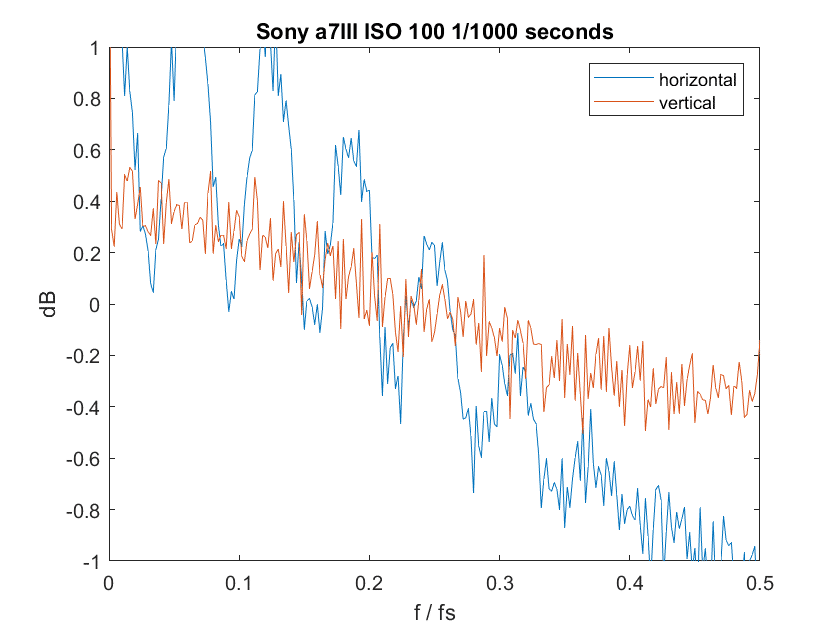
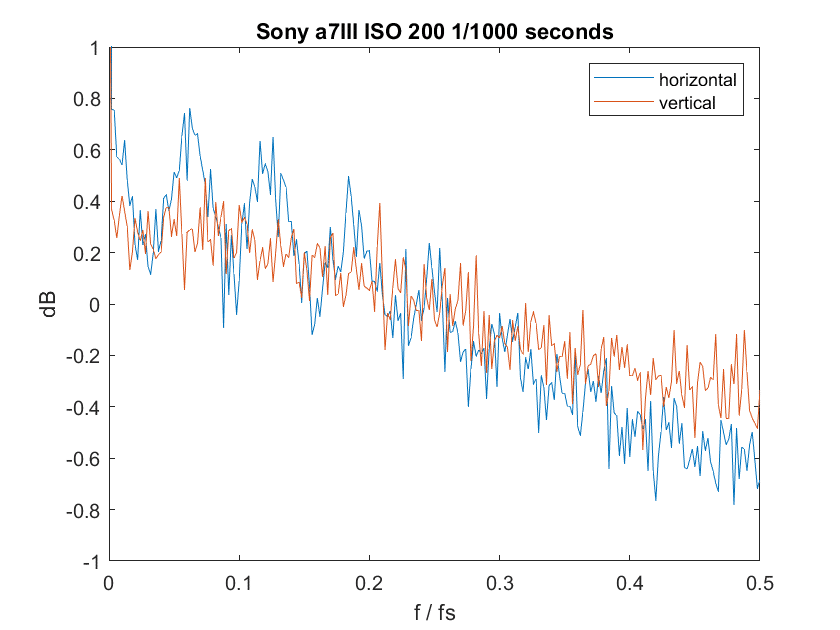
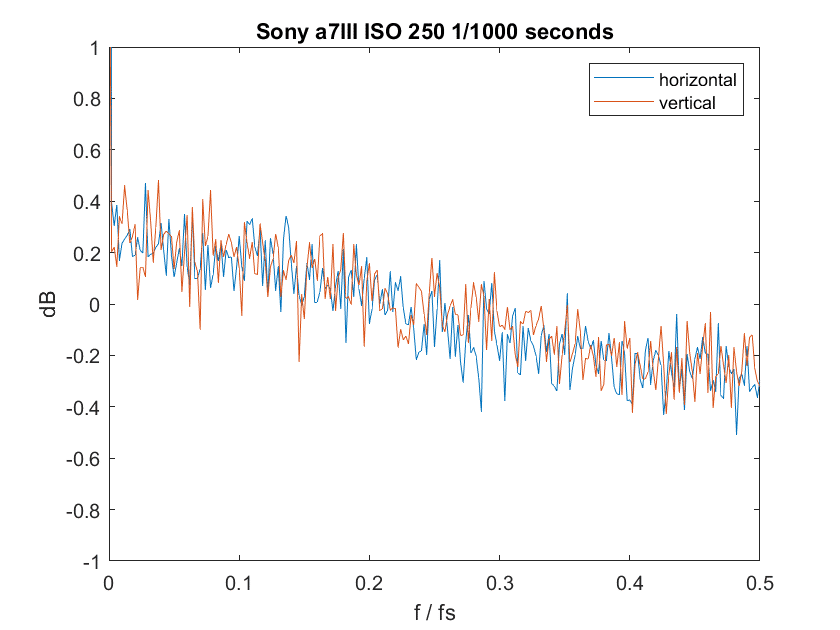
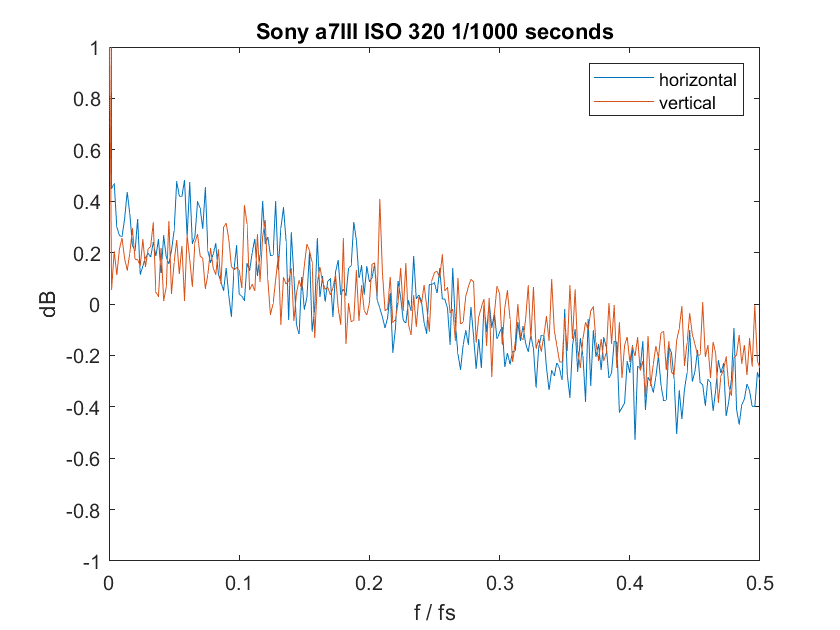
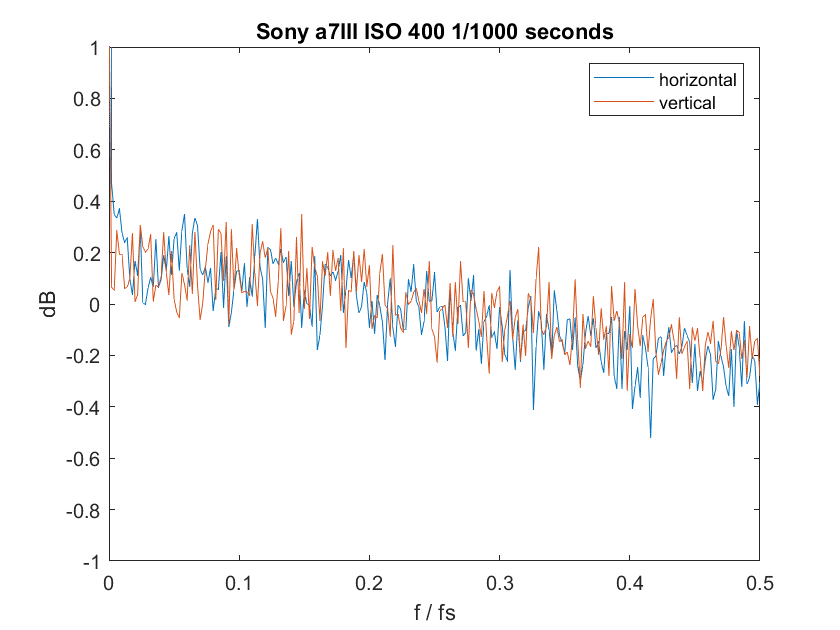
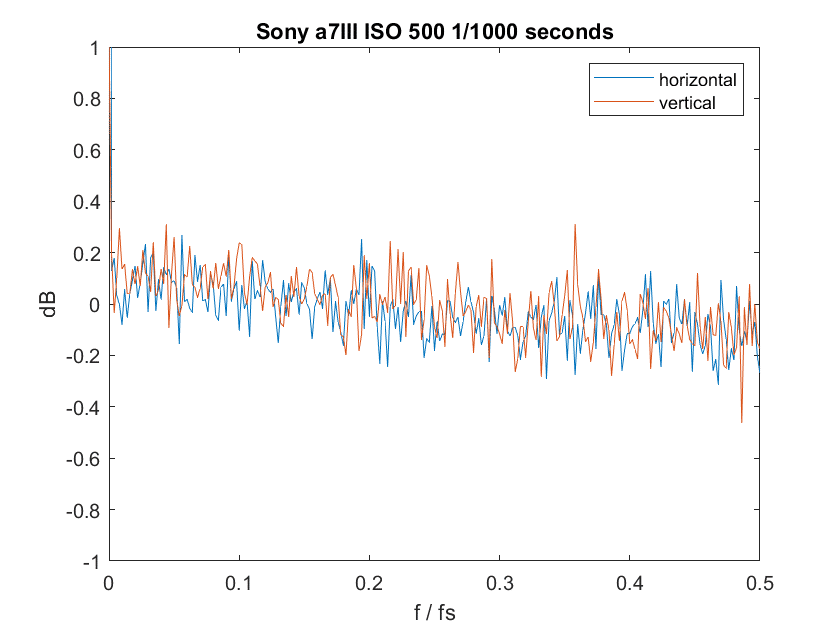
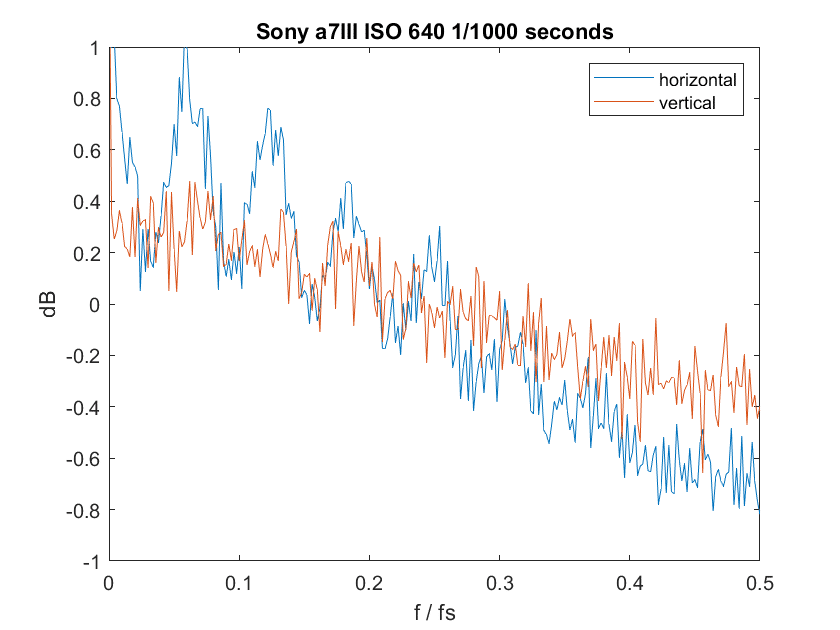
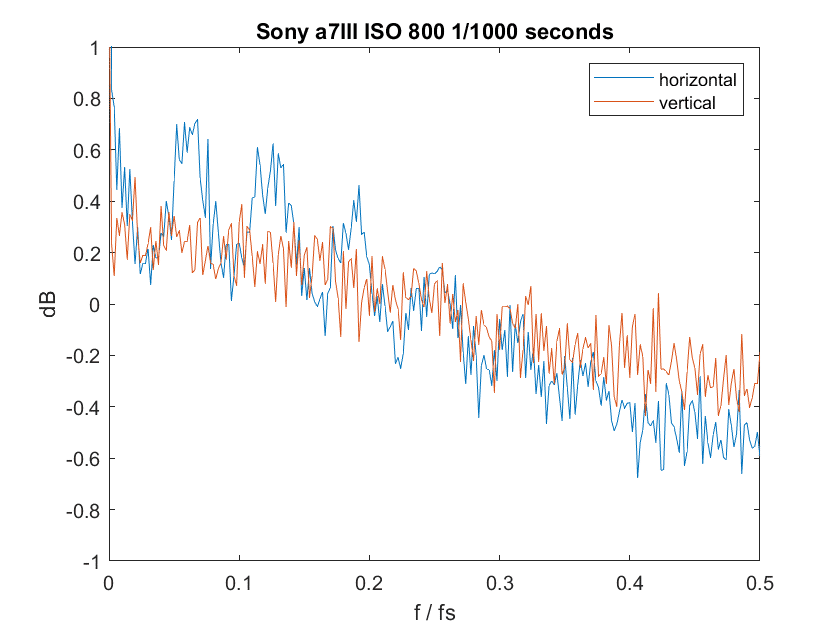
Jack Hogan says
Yes Jim, they seem to be doing something different there. As an additional data point, from back of the envelope SNR calculations off DPR studio scene data, I am getting clipping at 5-6000e-/um^2, which is 1.5-2x what we have been seeing till now.
Arthur says
Jim
I think you readership would always benefit if you had some kind of dumb it down summary as if you were explaining this to C-level executive.
Not every – but many of your articles and readers would benefit from this practice.
Kind regards,
JimK says
Here it is: If Sony is using these kinds of tricks to achieve their impressive noise numbers for the a7III, that would, I think, be a shame. This kind of thing is much better done in postproduction.
AndrewZ says
To be fair I think they’re all using some form of noise reduction on raw (except maybe Canon which is why for a time asto preferred Canon). Samsung did some pretty heavy handed noise reduction to their raws towards the end as well as lens corrections baked in, Pentax is well known to cook, I’ves suspected some chroma noise reduction on Nikons for years (especially when they achieve much better figures with the same sensor). Fuji is doing some by default with X-trans and I’ve heard comments about cooking on their bayer sensor APS-C as well.
JimK says
As far as I can see, there is no digital filtering on the GFX, and on the D810 and D850 at high shutter speeds. There is no general digital filtering on Sony a7x except at nosebleed ISO settings and long shutter speeds.